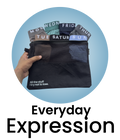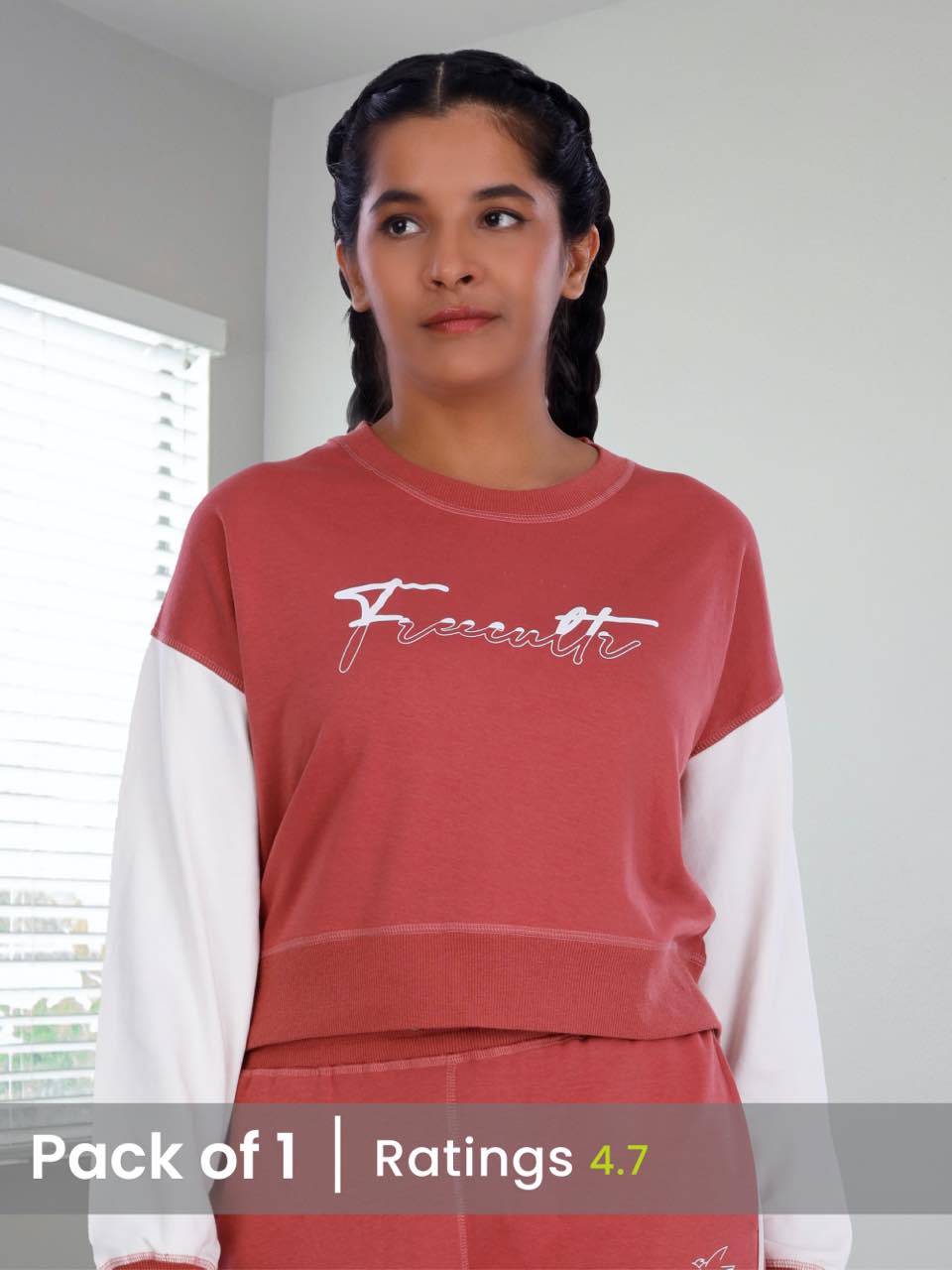Imagine sinking into unparalleled comfort after a long day, enveloped in a familiar, comforting embrace. That's the promise of the sweatshirt, a garment steeped in history yet perpetually relevant. We'll delve into what makes the perfect sweatshirt, from the crucial factors of fabric weight and construction to the subtle nuances of design that elevate it from basic to iconic. Forget fleeting trends; we're exploring enduring style, examining how classic designs are being reinterpreted with modern sustainable materials and innovative fits. Discover the secrets to selecting a sweatshirt that not only feels amazing but also stands the test of time, becoming a cherished staple in your wardrobe.

The Enduring Appeal of the Sweatshirt
The sweatshirt. It's more than just a piece of clothing; it's a symbol of comfort, casual style. Enduring versatility. From its humble beginnings as athletic wear to its current status as a wardrobe staple, the sweatshirt has undergone a fascinating evolution. Its appeal lies in its simplicity, functionality. The sheer comfort it provides.
A Brief History: From Athlete's Ally to Everyday Essential
The sweatshirt's story begins in the early 20th century. Benjamin Russell Jr. , a football player, grew tired of the itchy wool jerseys his team wore. His father, Benjamin Russell, Sr. , owned a manufacturing company that produced women's undergarments. Young Russell approached his father with the idea of creating a more comfortable alternative using cotton. This led to the creation of a loose-fitting, long-sleeved cotton jersey – the precursor to the modern sweatshirt. This garment was initially designed to be worn by athletes during training to absorb sweat and keep them warm.
Over time, the sweatshirt's popularity spread beyond the athletic field. In the 1960s and 70s, colleges and universities began printing their logos on sweatshirts, transforming them into a form of wearable school pride. This trend further solidified the sweatshirt's place in popular culture. Today, sweatshirts are worn by people of all ages and backgrounds, making them a truly democratic garment.
Understanding Sweatshirt Fabrics: Cotton, Polyester. Blends
The comfort and performance of a sweatshirt are largely determined by the fabric it's made from. The most common materials include cotton, polyester. Various blends. Each offers its own unique set of advantages and disadvantages.
-
Cotton: Known for its softness, breathability. Absorbency, cotton is a popular choice for sweatshirts. It's comfortable against the skin and allows for good airflow, making it ideal for everyday wear. But, cotton can shrink after washing and takes longer to dry than synthetic fabrics.
-
Polyester: This synthetic fiber is durable, wrinkle-resistant. Quick-drying. Polyester sweatshirts are often used for athletic activities because they wick away moisture and maintain their shape. But, polyester is less breathable than cotton and can feel less comfortable in hot weather.
-
Blends: Many sweatshirts are made from a blend of cotton and polyester, combining the best qualities of both materials. These blends offer a balance of comfort, durability. Wrinkle resistance. A common blend is 50% cotton and 50% polyester, which provides a good combination of softness and easy care.
Sweatshirt Styles: A Variety to Choose From
The sweatshirt isn't a monolithic garment; it comes in a wide range of styles to suit different preferences and occasions. Here are some of the most common types:
-
Crewneck: This is the classic sweatshirt style, featuring a round neckline. Crewneck sweatshirts are versatile and can be worn on their own or layered under a jacket.
-
Hoodie: Hoodies feature a hood that can be pulled up for added warmth and protection from the elements. They often include a kangaroo pocket in the front. Hoodies are popular for casual wear and athletic activities.
-
Zip-Up Hoodie: Similar to a hoodie. With a zipper down the front. Zip-up hoodies offer more flexibility in terms of temperature control and layering.
-
Raglan Sleeve: This style features sleeves that extend to the collar, creating a diagonal seam. Raglan sleeves provide a more relaxed fit and are often found in athletic sweatshirts.
-
Oversized: Designed for a loose, comfortable fit, oversized sweatshirts are a popular fashion trend. They offer a relaxed and effortless style.

Sweatshirt Construction: Seams, Ribbing. Details
The construction of a sweatshirt plays a crucial role in its durability and comfort. Key elements to consider include seams, ribbing. Other details.
-
Seams: High-quality sweatshirts feature reinforced seams that are less likely to tear or unravel. Flatlock seams are often used in athletic sweatshirts to minimize chafing.
-
Ribbing: Ribbing is the elasticized knit fabric used at the cuffs, hem. Neckline of a sweatshirt. It helps to maintain the garment's shape and provide a snug fit. Look for ribbing that is thick and resilient.
-
Details: Other details to consider include the quality of the drawstring on hoodies, the durability of the zipper on zip-up hoodies. The presence of features like thumbholes or zippered pockets.
Sweatshirt Printing Techniques: From Screen Printing to Digital Printing
Many sweatshirts feature printed designs, logos, or graphics. Several different printing techniques are used to apply these designs, each with its own advantages and disadvantages.
-
Screen Printing: This is a traditional printing method that involves pressing ink through a stenciled screen onto the fabric. Screen printing is durable and cost-effective for large quantities.
-
Digital Printing (DTG): Direct-to-garment (DTG) printing involves spraying ink directly onto the fabric using a specialized printer. DTG printing is ideal for complex designs with many colors and gradients. It's also suitable for small quantities.
-
Heat Transfer: Heat transfer involves printing a design onto a special transfer paper and then using heat and pressure to transfer the design onto the fabric. Heat transfer is a versatile method that can be used for a variety of designs.
-
Embroidery: Embroidery involves stitching a design onto the fabric using threads. Embroidery is a durable and high-quality option that adds a textured look to the design. Choosing the right material is key when embroidering a sweatshirt.
Styling Your Sweatshirt: Versatile Outfit Ideas
One of the best things about sweatshirts is their versatility. They can be dressed up or down to suit a variety of occasions. Here are some styling ideas:
-
Casual: Pair a crewneck sweatshirt with jeans and sneakers for a classic casual look. Add a baseball cap or beanie for extra style.
-
Athletic: Wear a hoodie with leggings or joggers for a comfortable and functional workout outfit.
-
Layered: Layer a sweatshirt under a jacket or coat for added warmth in cold weather.
-
Dressy Casual: Dress up a sweatshirt by pairing it with tailored pants or a skirt and heels. Choose a sweatshirt in a solid color or with a subtle design.
Caring for Your Sweatshirt: Washing and Maintenance Tips
Proper care is essential to keep your sweatshirt looking its best and lasting for years to come. Here are some tips:
-
Read the care label: Always follow the instructions on the care label, as different fabrics and printing techniques may require different washing methods.
-
Wash inside out: Washing sweatshirts inside out helps to protect the printed design from fading or cracking.
-
Use cold water: Wash sweatshirts in cold water to prevent shrinking and fading.
-
Avoid harsh detergents: Use a mild detergent that is designed for delicate fabrics.
-
Tumble dry on low: Tumble dry sweatshirts on low heat or hang them to dry to prevent shrinking.
-
Avoid ironing prints: If you need to iron a sweatshirt with a printed design, iron it inside out on a low setting.
The Future of Sweatshirts: Innovation and Sustainability
The sweatshirt continues to evolve, with new innovations and a growing focus on sustainability. Manufacturers are exploring new fabrics, technologies. Production methods to create more comfortable, durable. Environmentally friendly sweatshirts.
-
Sustainable Fabrics: Look for sweatshirts made from organic cotton, recycled polyester, or other sustainable materials.
-
Innovative Technologies: Some sweatshirts incorporate technologies like moisture-wicking fabrics, odor-resistant treatments. Temperature-regulating materials.
-
Ethical Production: Support brands that prioritize ethical labor practices and fair wages.
Conclusion
Looking ahead, the enduring appeal of the sweatshirt suggests it's not just a garment. A canvas. We've seen how its comfort and classic design create a foundation for self-expression. This trend will only amplify. Expect to see more collaborations pushing design boundaries, incorporating sustainable materials. Leveraging technology for personalized fits and functionalities. Your next step? Don't just wear a sweatshirt, curate it. Think about the story you want to tell, the values you want to represent. Seek out pieces that resonate with your authentic self. Remember, the perfect sweatshirt isn't just about warmth; it's about confidence and comfort combined. Invest in quality, embrace individuality. Be ready to witness the evolution of this iconic piece. Consider exploring smaller, independent brands prioritizing ethical production – you might just discover your new favorite. The possibilities are endless. The future of the sweatshirt is bright, bold. Uniquely yours.
FAQs
So, what's the big deal about sweatshirts? I mean, they're pretty basic, right?
You might think so at first glance. Sweatshirts are secretly awesome! They're the ultimate in comfy-casual wear. Think of them as a wearable hug – warm, soft. Perfect for everything from lounging on the couch to running errands. Plus, their simple design makes them super versatile; you can dress them up or down.
What kind of material are we usually talking about with sweatshirts?
Most sweatshirts are made from cotton or a cotton blend, often with some polyester or fleece thrown in. This combo gives you softness, warmth. Durability. You might also see some made with things like French terry, which is lighter and more breathable.
How do I keep my sweatshirt looking good wash after wash?
Good question! The golden rule is to check the care label first. Generally, washing inside out in cold water and tumble drying on low is your best bet. Avoid harsh detergents and bleach to keep the color vibrant. And resist the urge to over-wash – sometimes a little spot cleaning is all you need.
Are all sweatshirts created equal? What are some different styles?
Nope! You've got your classic crew neck, which is super versatile. Then there are hoodies, perfect for extra warmth and a laid-back vibe. And don't forget zip-up sweatshirts, which are great for layering. Plus, you'll find variations in fit – from slim and tailored to oversized and cozy.
Okay, so what makes a good sweatshirt?
For me, it's all about the details. Look for quality stitching, durable fabric that doesn't pill easily. A comfortable fit that allows you to move freely. A well-made sweatshirt should feel good against your skin and hold its shape over time.
Can I actually dress up a sweatshirt or is that just wishful thinking?
Totally! A classic, well-fitting sweatshirt (maybe in a solid color) can look surprisingly chic with the right styling. Try pairing it with tailored trousers, a skirt, or even a blazer for a more polished look. Add some jewelry and stylish shoes. You're good to go!
What about shrinking? I'm always worried about my clothes shrinking in the wash!
Shrinking is definitely a valid concern! Pre-shrunk sweatshirts are your friend here. Always check the label. Following those washing instructions (cold water, low heat) is key to minimizing shrinkage too.





